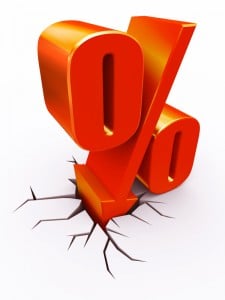Disclaimer – this is a blog post and not a dissertation on interest rates. There are an almost infinite number of inputs to the pricing of rates and only a simple model is being discussed here…
 I once had a professor tell me the secret to predicting the interest rate. He told us that interest rates have a tendency to either go up or down typically at some point in the future and then grinned a little sheepish grin.
I once had a professor tell me the secret to predicting the interest rate. He told us that interest rates have a tendency to either go up or down typically at some point in the future and then grinned a little sheepish grin.
Thanks, Doc. That was helpful.
He then totally made up for it as he went into the simplest reasons behind why they do…and it has stuck with me to this day.
Here is my poor attempt at rehashing what he said.
What is the privilege of someone having a dollar and someone else needing one?
Assuming that there was no chance that you would not be paid back and that the money you received back would be worth the same, then you have found the Pure Rate of Interest. There are other terms for this concept but the basic definition is ‘risk free rate of return.’ For the most part, this rate is roughly 3%. The cost to borrow money, viewed in this way, begins at 3%. Anything that drives the interest rate up from here is due to other factors.
What is the risk you will not pay me back?
So you borrow a dollar from me…will I get it back? Depending on what I view to be the chance that I will (or will not) get repaid, will be the premium that I charge over and above the PURE RATE or the RISK FREE RATE. Do I loan you $1 to spend on your housing or do I loan you $1 to spend on a cup of coffee or a HD TV? Both carry different levels of risk. Prior to the crash, approximately 1% of all residential mortgages went into foreclosure in any given year and even in foreclosure, a bank stands to get a good chunk of its money back. While the instance of foreclosure is still higher than historical norms, it is trending back toward those norms as the market begins to balance itself.
What is the risk that the money I get back has been devalued by inflation?
This is the tricky one and primary reason that rates rise and fall. Over time, money tends to become worth less and less. If a mortgage is set to pay off at a point 10, 15 or 30 years into the future, then the lender must be compensated by the amount that his money has become devalued. The shorter the term of the mortgage, then the smaller the inflation premium needs to be in order to adequately protect the lender from the risks of inflation. It is why the long term rates are (in almost all cases) higher than the short term rates.
What does this all mean?
What it means is this…the interest rate is one of the best barometers of pending economic activity. If you begin to see a spread developing between short term and longer term rates, it usually means that the market is seeing activity and the potential for inflation and/or there is competition for money. While both short and long term rates remain low, there are more and more signs of increasing pressure due to both economic activity and potential inflation. In this scenario, it probably means that those who price money are expecting home values to increase.

